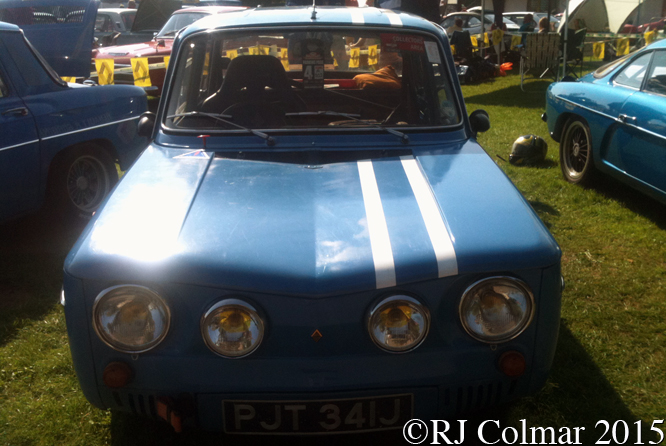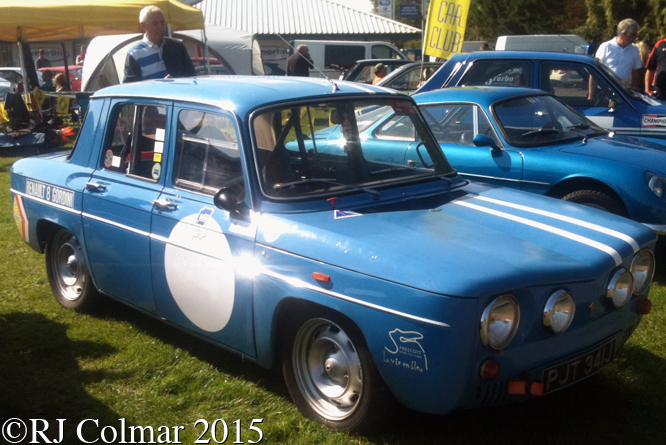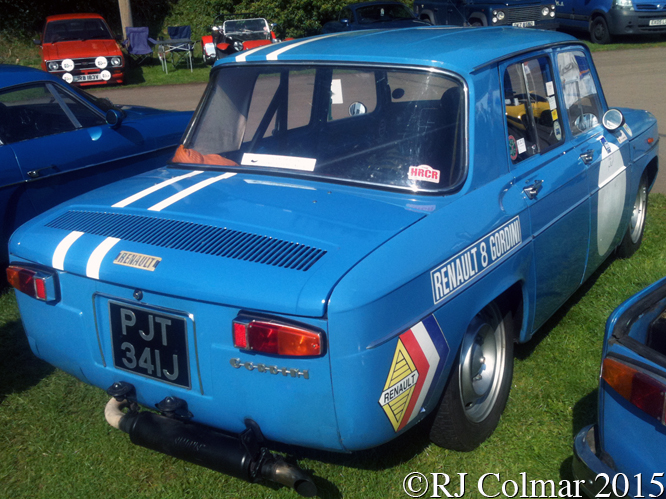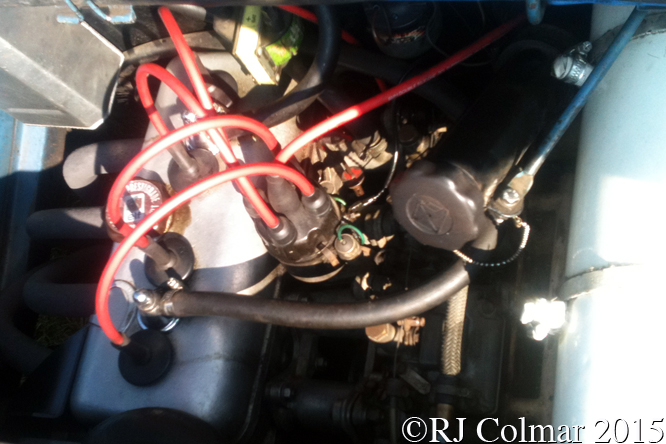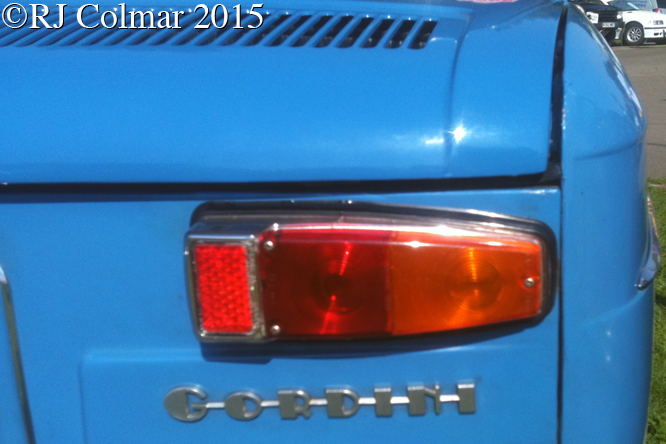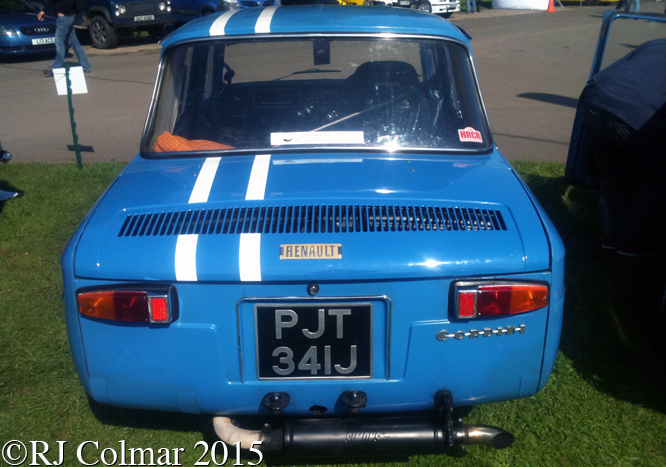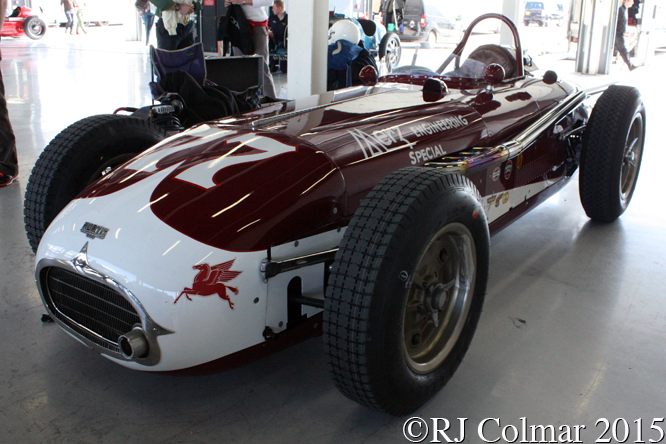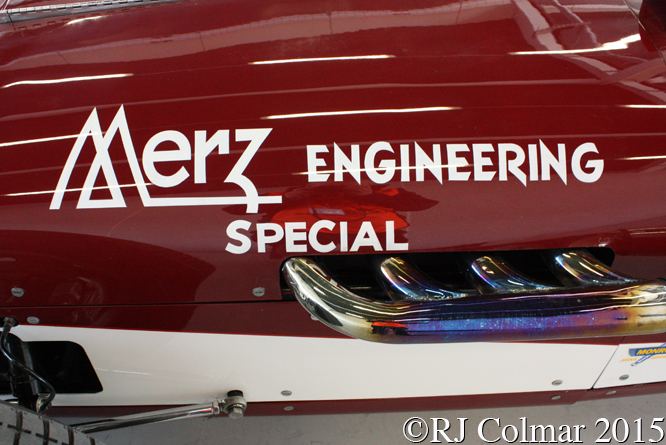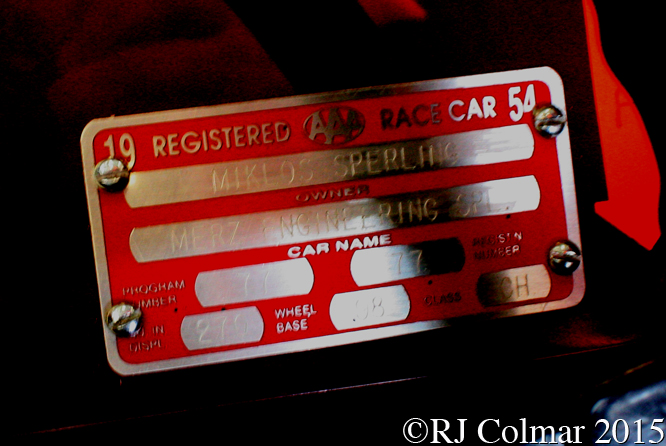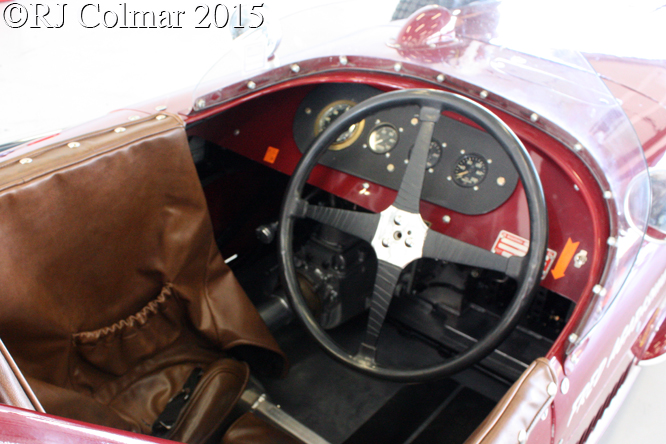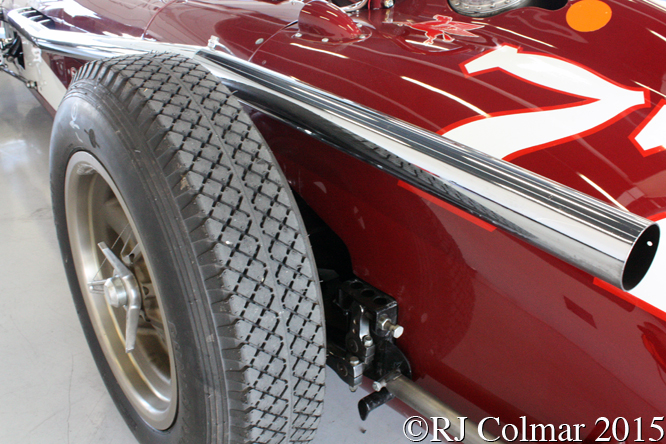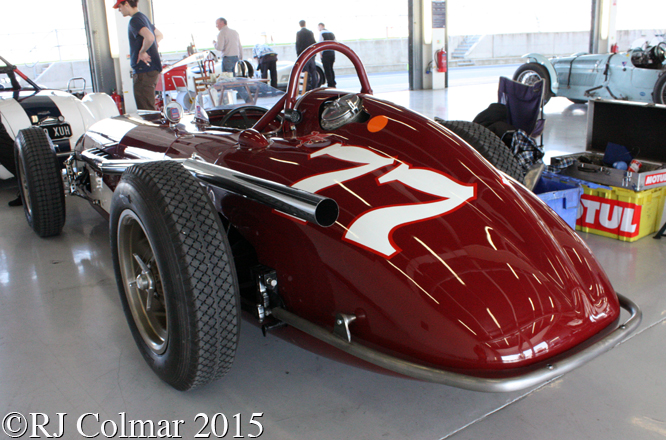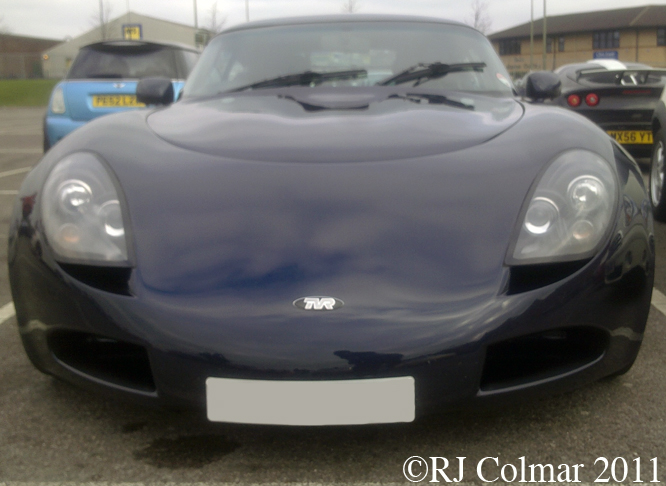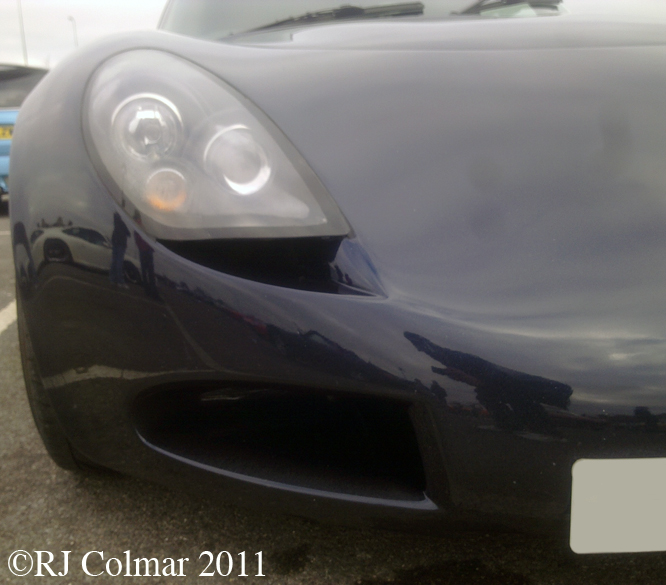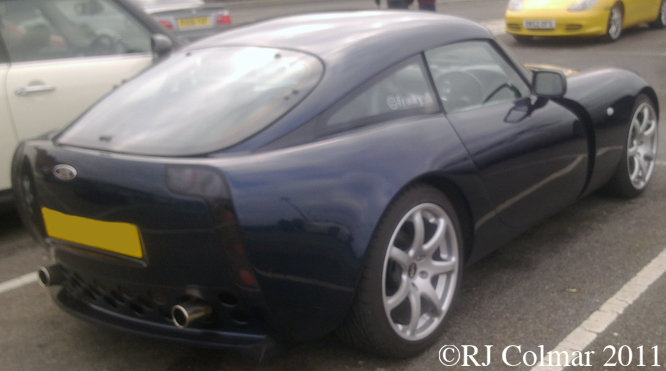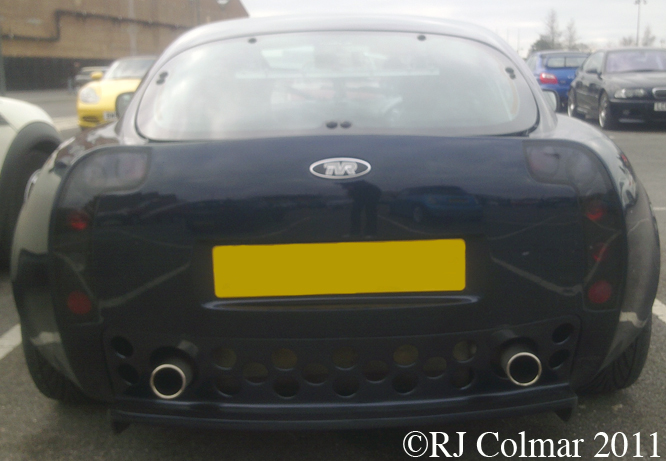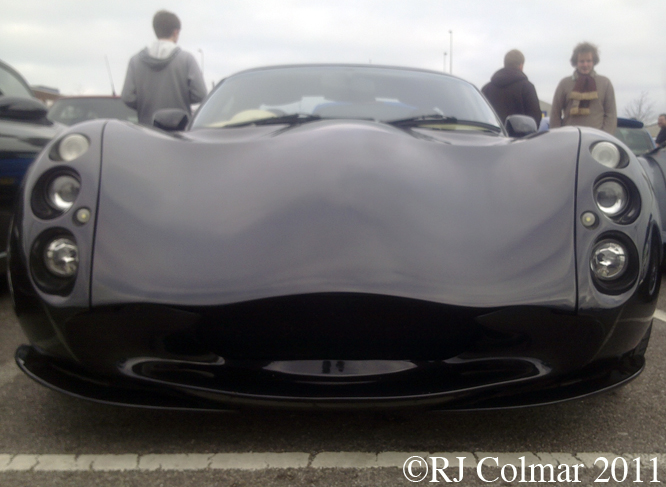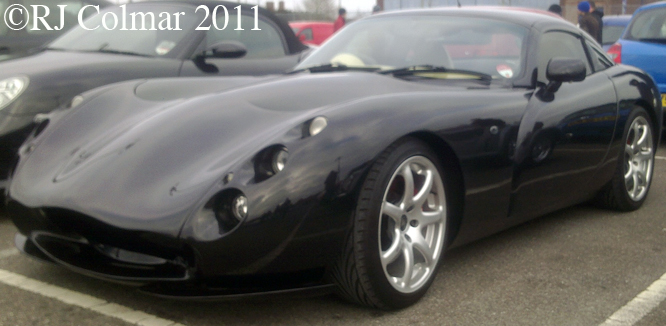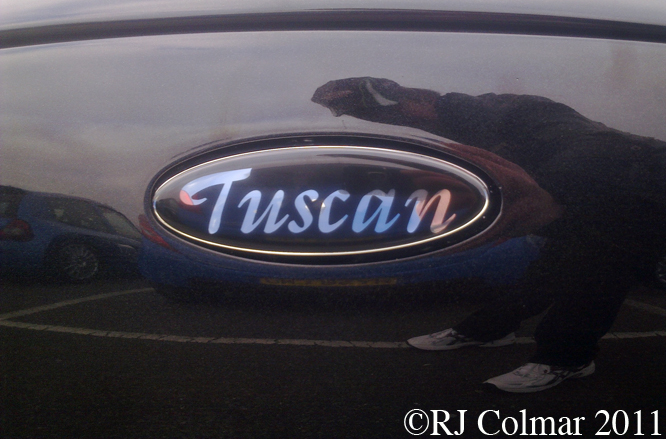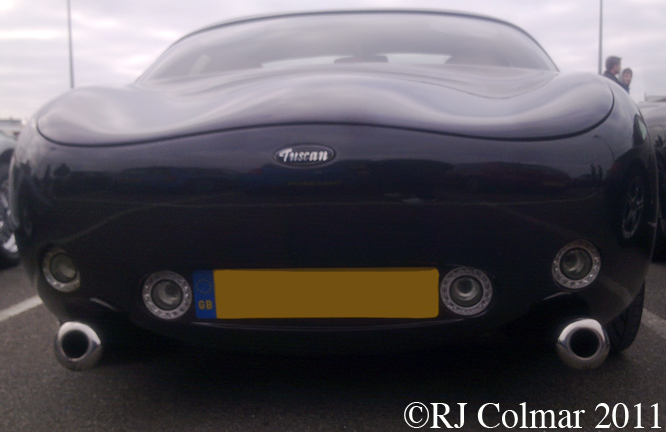A couple of months ago I was offered the opportunity to navigate a unique Parsons Trials car on the Exeter Trial by owner Alan “Spence” Spencer. After Alan kindly agreed to make a few modifications so that I could sit in the car properly by raising the seat and adding four inch screen to afford some protection from the on coming wind I agreed to join him and had been looking forward to the experience ever since.
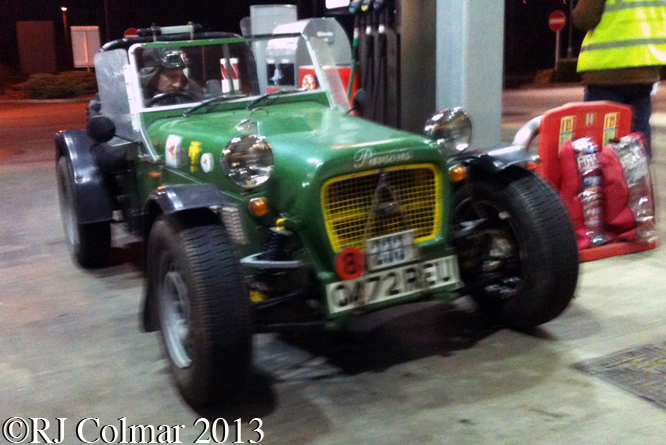
Alan is seen above strapping himself into the Parsons at the first rendezvous Burford Services, Cirencester where we joined 39 other motor cars at close to midnight. The Exeter Trial was first run on Boxing Day 1910 by the Motorcycle Club from London to Exeter and back. As the roads got better so the trials went off road to maintain some degree of challenge for those taking part. The first part of the 2013 Exeter Trial was a regularity run over an 88 mile prescribed route to the Haynes International Motor Museum with an easy target time of 2 hours, mercifully I had prepared my wardrobe well and was comfortably warm sitting in the Ford Kent powered Parsons despite being exposed to the elements.
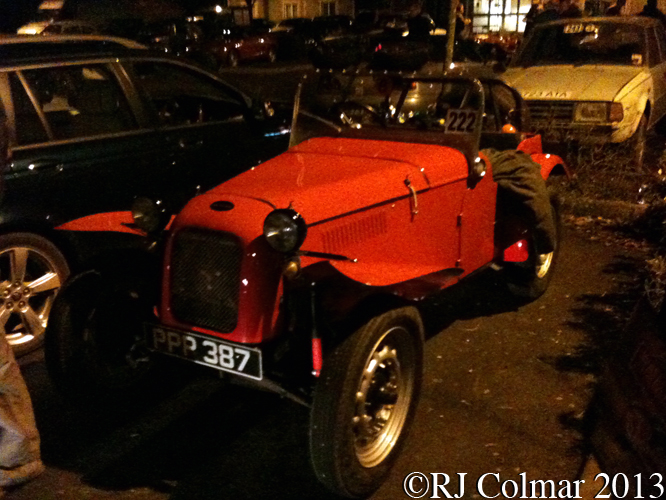
Among assorted Skoda’s, VW Beetles and an Mazda MX5 with an urban paint job starting from Cirencester was this rare #222 Gregory trials car driven by Josh Moss and Chris Ferin. At the Haynes motor museum there was a compulsory two hour break during which I enjoyed a hearty Full English Heart Attack breakfast and a 1/2 hour flat on my back to ease the inevitable stiffness that occurs after sitting in a confined space for 2 hours in ambient temperatures a couple of degrees above freezing.
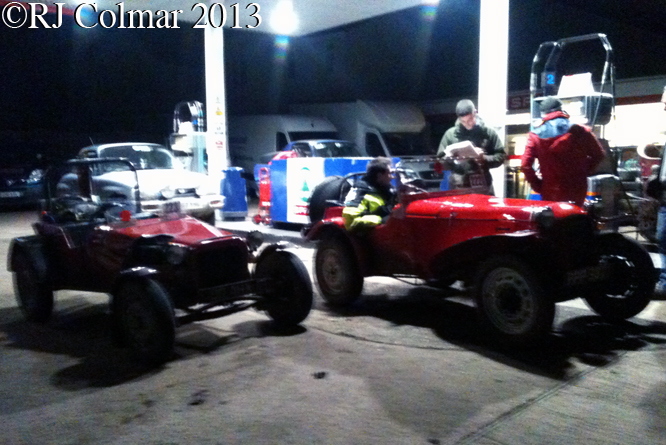
Above the #223 Ford Special of Alex Wheeler and Tony Underhill is parked up alongside the #222 Gregory and ahead of a couple of Suzuki X-90’s that were also taking part at the Musbury Garage checkpoint.
After a very quick observed stopping and reversing test at Haynes we headed for the first off road trial at Windwhistle Hill, by now I had a good grip on the abbreviations used in the route notes which Spence had thoughtfully copied and mounted onto a neat illuminated roller box as used by bomber command navigators in WW2 and by Denis Jenkinson to help Stirling Moss to victory in the 1955 Mille Miglia. In the pitch black of the night from the navigators seat of the Parsons at five in the morning the Windwhistle Hill observed section appeared to take place on a very wet and rutted and rocky forestry track, getting down to the start of the time section it was almost as much fun as roaring back up to the top for a clean run which included a compulsory stop and restart halfway up.
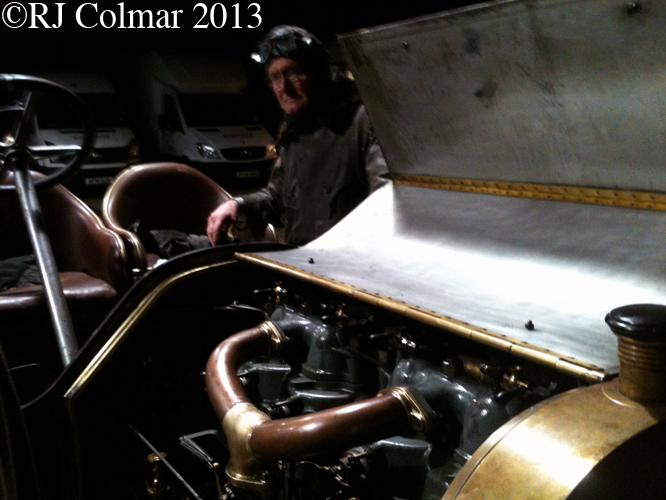
From Windwhistle Hill we proceeded 5 miles to the next observed section Underdown II following the magnificent chain driven 1903 Mercedes 60 hp Simplex of Ben and Roger Collings with a burbling 4 cylinder 9.235 litre / 563 cui motor which was being guided by chain drive aficionado Duncan Pittaway and Ant Lucas in a raucous TVR V8S. The Mercedes needed a guide on account of the fact that nominal navigator 70 year old Roger Collings, seen above, was fully occupied holding on to two handles to stay in his completely exposed seat.
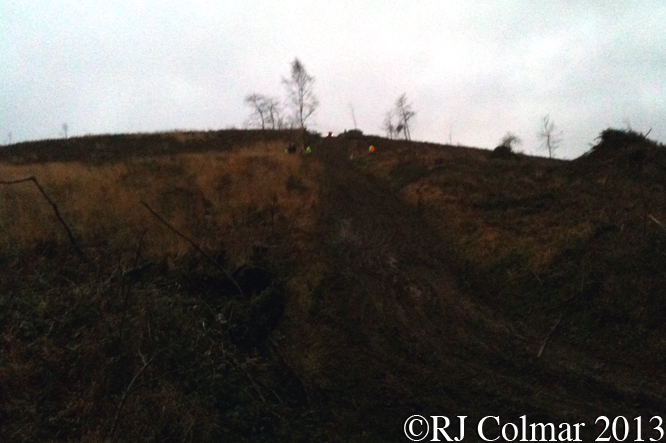
Above the #238 Volkswagen Beetle of Nicola Butcher completes a clean run of Norman’s Hump.
After another clean run up Underdown II we headed for the Musbury Garage check point, as we were running ahead of scheduled time Spence pulled over for a quick cat nap before we pulled into the Garage to get our route card signed. Day light was appearing as we reached observed Section 3 known as Norman’s Hump where there was a long queue of competitors waiting.

We began to feel like we were on a roll as we cleaned Norman’s Hump and the following observed sections Waterloo, Strets, Core Hill and Bulverton Steep which were all on wet surfaces thanks to the yule tide deluge that had ceased earlier in the week. Over the last few morning sections we were running last on the road with the course closing FIAT Panda 4×4, seen above, on our tail.
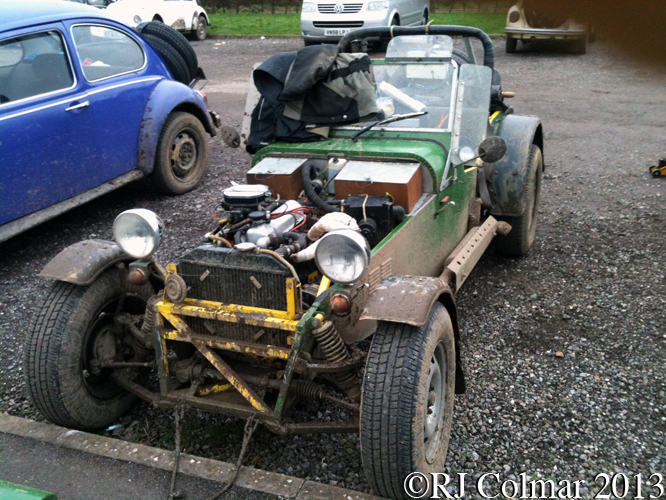
This was not helped by the fact that Spence used an electric pump to inflate his tyres after each section which lost us time, unfortunately the Parsons, seen above at Crealy Park, is not really big enough to carry a time saving gas bottle as many other competitors did. For most of the observed sections we were running between 10 and 15 psi on the rear tyres for extra grip, too low a pressure to be running on the road sections to be safe.
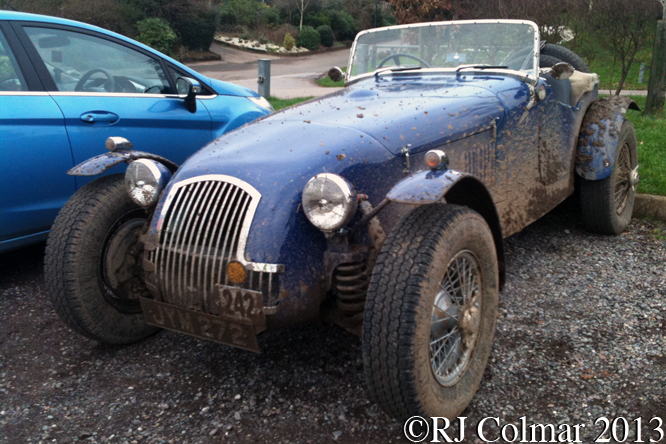
Just after 10 we arrived at the Crealy Park time control where Spence borrowed Duncans jack to swap the rear wheels over because the tyres on both sides had slipped on the rims, he also checked over the levels which were all fine during the one hour compulsory stop while I took a few snaps of some of the other vehicles taking part including the #242 Allard M Type Special of William Holt and Martyn Wyatt above. After a brunch, chicken and fried rice with satay sauce that I bought at our local take away just before setting off from Bristol, we headed into the sunshine towards afternoon sections starting with Tillerton Steep.

Above Chris Hickling and Wendy Bayless from Falmouth are seen in front of their #207 Marlin which suffered a puncture on Norman’s Hump.
If the morning had proved to be ecstatic with clean runs then Tillerton Steep began a run of drip fed cruel agony as there was a restart on a large slab of wet rock which offered absolutely zero traction. We had failed our first test though we managed to get up the remainder of the course on our second attempt.
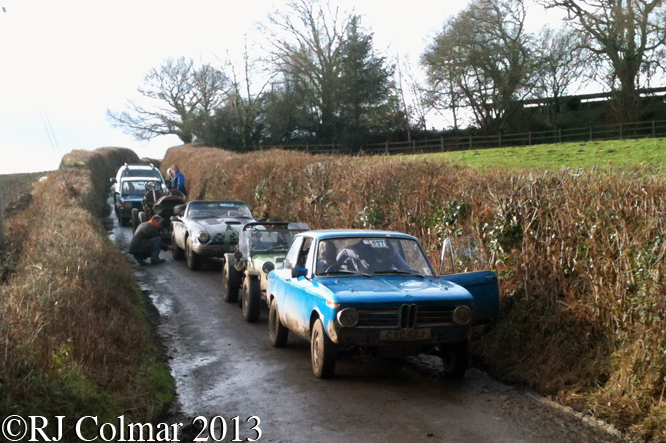
Above the Edna Perryman climbs into the back seat, of the #237 BMW 2002 while Colin awaits to cross the ford prior to their run up Tillerton Steep. Note the course closing Panda behind the Mercedes.
We then followed the Mercedes Simplex to Fingle Hill which we cleaned, with slightly raised spirits we continued the short distance to Wooston Steep behind the 1903 Mercedes Simplex which pulled an awesome handbrake turn to line up for the gates that marked the entrance to the path that led to the observed section. Wooston Steep which had two finishes according to class, being in the toughest class 8 we had to make a run past a left fork up to the top, unfortunately we got caught in the ruts which turned left and lost too much momentum to complete the test. The Exeter Trial is about completing ‘cleaning’ all the sections if one completes all sections no more than ten mins behind schedule one is awarded a Gold medal, if one fails one section but completes all the rest within 20 mins of the target time one earns a silver and a bronze is awarded if all bar two sections are completed within 30 mins of the target time.
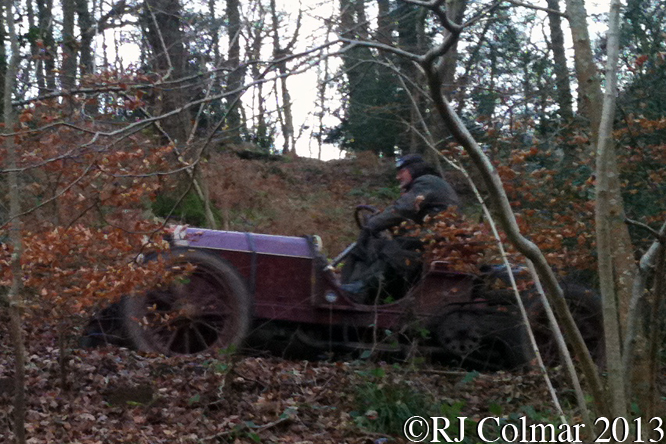
Above Ben Collings blasts up Fingle Hill while Roger hangs on to the 1903 Mercedes Simplex as best he can.
After a third observed Autotest at Wooston Steep it was off to Ilsington Parish Hall for another compulsory hour break during which I enjoyed some decaffinated coffee and some lovely cake. Next it was off round the corner to Simms a long wait ensued as many cars failed to get to the top after the restart. We eventually blasted up the first part of the hill but could not manage the second and ended up being carefully guided, who almost manhandled the car back to the corner so that we could reverse down the remainder of the course. Our shot at a medal was over and dissappointed we headed for Tipley Hill where another long queue awaited us. By now it was getting dark and colder again and since we were no longer in with a chance to win a medal we elected to skip Tipley Hill and headed for the final section Slippery Sam a cross between a rock garden and a bomb hole of a hill, again we flew up the first part but needed two attempts to clear the restart after which we flew around the last couple of corners bouncing over ground that would be an easy test for a four wheel drive but was a thriller in the tiny Parsons.
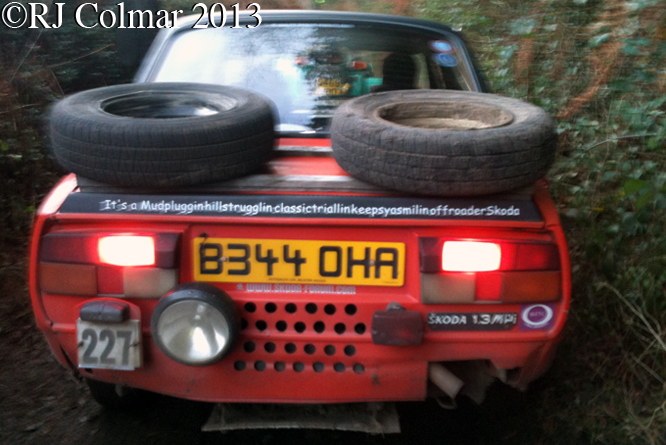
Above part of discipline of the Exeter Trial is having the patience to sit in long queues in narrow lanes, above the #227 Skoda Estelle of Ben & Rosin Giles awaits it’s turn to get to the start of Simms.
We then headed to the Trecarn Hotel Babbacombe where exhausted we handed in our time card for the final time, glad to be in one piece, and that it had neither snowed or rained during the exhilarating 19 hour 250 mile drive. After a shower we joined many of the competing crews for dinner where tails of triumphs and failure were exchanged. I eventually crashed out feeling like I was still moving !
My thanks to Alan Spencer for taking me along on the Exeter Trial in his little Parsons which will be the subject of a future blog, thanks also to all the marshalls and organisers who put the time and effort in to making the event happen, I hope the opportunity to participate comes round again in the not too distant future.
Thanks for joining me on this “Chased By A Panda” edition of “Gettin’ a li’l psycho on tyres” I hope you will join me again tomorrow. Don’t forget to come back now !
